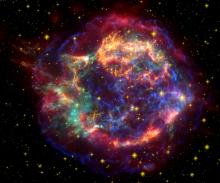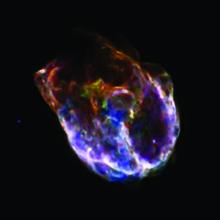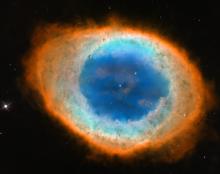Listen to today's episode of StarDate on the web the same day it airs in high-quality streaming audio without any extra ads or announcements. Choose a $8 one-month pass, or listen every day for a year for just $30.
You are here
Gienah
Most stars consist almost entirely of hydrogen and helium, the lightest and simplest chemical elements. But there’s a smattering of other ingredients as well — everything from oxygen to platinum. These elements can be tough to detect, though. For one thing, there’s not much of them — they add up to only a fraction of one percent of all of a star’s atoms. And for another, they’re usually concentrated deep inside the star, where they’re hidden from astronomical instruments.
But one class of stars likes to show off some of those elements. The stars in this class all have about the same surface temperature — they’re much hotter than the Sun.
They’re known as mercury-manganese stars, because they can show concentrations of these and similar elements that are thousands of times greater than in other stars.
They don’t really have more of these elements, though. Instead, more of the elements have been dredged up from deep inside. Radiation from the star’s core may push these elements to the surface, where astronomers can see them. On the other hand, gravity pulls other types of elements toward the core, so the stars show unusually low levels of them.
One good example of a mercury-manganese star is known as Gienah. It’s the brightest star of Corvus, the crow. The constellation is in the southeast as night falls, and due south around midnight. Its brightest stars form the outline of a small sail. Gienah is at the top right corner of the sail.
Script by Damond Benningfield





